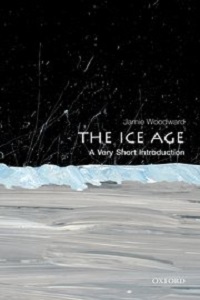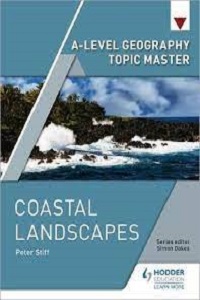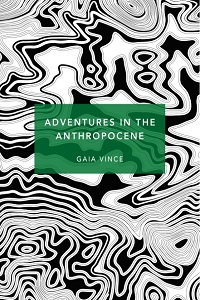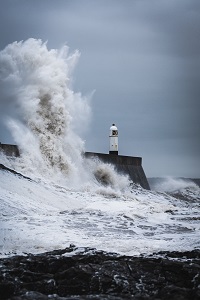How will these resources help you?
One key aim of both A-level and GCSE Geography is to develop and extend student knowledge and understanding of physical processes and landscapes, including how places and processes change dynamically over different time scales. Sensitivity to scale (both spatial and temporal) is an integral part of what it means to ‘think like a geographer’. Current GCSE courses require learners to study ‘geomorphic processes at different scales, operating in combination with geology, climate and human activity’. A-level courses go further, requiring learners to understand ‘how landforms and landscapes evolve as a result of processes driven by past, present and future climate changes.’ A-level and GCSE courses alike typically offer students the choice of either coastal environments or glaciated environments as the distinctive UK physical landscape they will study. The following resources have been carefully selected to assist teachers with fostering conceptual understanding of different temporal and spatial scales through the study of physical landscapes (either coastal landscapes or glacial landscapes). These resources are aimed primarily at GCSE geography teachers and A-level or even first-year university students. There is strong support in this selection for teaching and learning about how these landscapes evolve due to processes driven by past, present and future climate changes. The ‘Very Short Introduction’ series comprises of short, slim volumes that are easy to carry around in a coat pocket.
Getting to grips with historical climate and landscape change

The Ice Age: A Very Short Introduction
by Jamie Woodward, published by Oxford University Press, (2014), 9780199580699
This book can help prepare the non-specialist and specialist teacher alike to deliver the GCSE Glacial Landscapes course component. The AQA GCSE Specification, for example, begins with an overview of the ‘Maximum extent of ice cover across the UK during the last ice age’. Chapter 7 of Jamie Woodward’s book provides all the background information you’ll ever need to teach this topic confidently. Other chapters look at evidence from the continents, the oceans, and the ice core records and also tell some of the engaging human stories behind the research (biographies of some of the geographers who have helped shape the glacial studies we teach today). Jamie Woodward also examines the significant environmental changes during the Great Ice Age of the Quaternary Period. Finally, his exploration of fieldwork methods and data sources could help A-level students who want to carry out an independent investigation (coursework) linked with glacial landscapes. It’s a highly readable book – one review said: ‘The Ice Age reads like a thriller and will be valued by anyone who appreciates the landscape.’
Coastal stretch and challenge

Coastal Landscapes
by Peter Stiff, published by Hodder Education, (2018), 9781510434622
Peter Stiff’s book offers an expert view of key coastal landscapes topics appearing in both GCSE and A-level courses and is highly recommended reading for non-specialist GCSE teachers of the topic and A-level students aiming for the highest grades. The author emphasises system thinking and the way coastal systems have changed over varying time-scales, ranging from day-to-day alterations in beach profiles to sea-level changes occurring over millennia. In particular, Chapter 1 (system theory) and Chapter 5 (sea-level system changes) support those parts of the GCSE and A-level curricula that students often find tricky. The process and landform details are also very detailed and thoroughly up to date. Each chapter of the book has sections devoted to developing analytical and evaluative skills, with an eye on examination assessment objectives. This will be useful for teachers who want to help their students develop the wide range of competencies needed for examination success.
A new era of landscape change - the Anthropocene

Adventures in the Anthropocene
by Gaia Vince, published by Vintage Classics, (2019), 9781784873615
The significance of climate and landscape changes in recent decades are so great that many scientists say we have entered a new era of Earth’s history. The Anthropocene is defined as the current geological age we live in, viewed as the commencement of a period in which human activity and industrialisation have become the dominant influence on Earth’s climate and the natural environment. The changes made by humans to the Earth’s physical systems have altered the planet significantly and irreversibly. Gaia Vince’s prize-winning book provides an accessible introduction to an idea that many students will find fascinating and helps bring together ideas from physical landscape studies and human geography. The author travels the world ‘to see what life is really like for the people on the frontline of the planet we’ve made.’ Along the way, she encounters artificial glaciers in the Himalayas and electrified reefs in the Maldives!
Audiovisual clip

Britain’s Wildest Weather - Coastal Erosion and Storm Surges
published by BBC, (2020)
This clip explores the reasons for coastal erosion and what makes up a wave.
Further materials
Anthropocene: A Very Short Introduction by Erle C. Ellis, published by Oxford University Press, (2018), 9780198792987
Find this book
Landscapes and Geomorphology: A Very Short Introduction by Andrew Goudie and Heather Viles, published by Oxford University Press, (2010), 9780199565573
Find this book
VR Glaciers & Glaciated Landscapes by Des McDougall, published by University of Worcester, (2021)
Access this resource
Dr Simon Oakes is an experienced teacher who has worked as a chief or chair of examiners across a wide range of 14-18 qualifications. He is the series editor for Hodder’s Geography Topic Master series and an associate editor for Geography Review.
Text © Simon Oakes, 2022.
Text © Simon Oakes, 2022.



